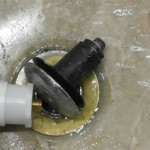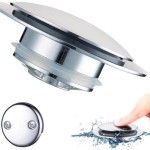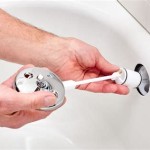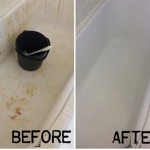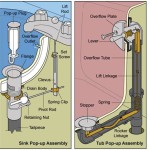How to Fix a Bathtub Soap Holder Handle
Bathtub soap holders, also known as soap dishes or soap trays, are common bathroom fixtures designed to keep soap bars dry and within easy reach. Over time, the handles on these holders, particularly those made of plastic or metal, can become loose, break, or detach entirely. Addressing a broken or malfunctioning soap holder handle is often a straightforward task that can save the expense of replacing the entire fixture. This article provides detailed instructions on how to diagnose and repair a faulty bathtub soap holder handle.
The approach to fixing a soap holder handle depends on the type of handle, the material of the holder and handle, and the nature of the damage. Before attempting any repairs, it's crucial to assess the situation carefully to determine the best course of action. This assessment will involve identifying the type of handle attachment, examining the extent of the damage, and gathering the necessary tools and materials.
There are several common types of bathtub soap holders, each with its own mounting mechanism. Some are suction-cup mounted, while others are adhered to the wall with adhesive strips or silicone caulk. Still others might be screwed directly into the bathroom wall. The type of mounting impacts how the soap holder can be repaired, particularly if the handle's fixing point is integrated into the mounting system. For instance, a cracked suction cup holder might require different tactics than a screwed-in ceramic holder.
Understanding the different types of handles is also critical. Some handles are molded directly into the soap holder itself, typically made of plastic. Others are attached separately with screws, glue, or other fasteners. A handle that is molded into the soap holder is often difficult to repair, while a screwed-on handle can typically be replaced or re-tightened relatively easily.
Identifying the Problem
The first step in fixing a bathtub soap holder handle is to accurately diagnose the problem. Common issues include:
- Loose Handle: The handle is wobbly or rotates freely, but is still attached to the soap holder. This problem often arises from a loose screw or nut.
- Cracked Handle: The handle has visible cracks, which can weaken its structural integrity and lead to eventual breakage. These cracks may be in the handle itself, or in the point where it attaches to the soap holder.
- Broken Handle: The handle has completely detached from the soap holder. This typically occurs due to excessive force or material fatigue.
- Stripped Screw Holes: This occurs when the screw hole in the soap holder or the handle itself has been damaged, preventing the screw from tightening properly.
- Corrosion or Rust: Metal handles, especially in humid bathroom environments, can corrode or rust, weakening the handle and its attachment point.
Carefully examine the handle and the surrounding area to identify the specific issue. Use a flashlight to get a clear view of any cracks or damage. Try to gently move the handle to assess the extent of the looseness or breakage. This thorough assessment will guide subsequent repair decisions.
Once the problem is identified, collect the necessary tools and materials. The specific tools required will vary depending on the type of repair. However, some common tools include screwdrivers (Phillips head and flathead), pliers, wrenches, epoxy adhesive, sandpaper, replacement screws, and cleaning supplies. Safety glasses and gloves are also recommended to protect against potential hazards.
Repairing a Loose Handle
A loose handle is often the easiest problem to fix. In most cases, the issue can be resolved by tightening a loose screw or nut. Locate the screw or nut that secures the handle to the soap holder. Use the appropriate screwdriver or wrench to tighten it. Be careful not to overtighten, as this can strip the screw or crack the soap holder.
If the screw continues to loosen after being tightened, the screw hole may be stripped. This can often be remedied by inserting a small piece of wood, plastic, or steel wool into the screw hole to provide a tighter grip for the screw. Alternatively, the screw hole can be filled with epoxy adhesive and allowed to harden before reinserting the screw. Another solution is to use a slightly larger screw. This may require widening the hole in the handle to accommodate the larger screw head.
In some cases, the loosening may be due to vibration or movement of the soap holder. To prevent this, consider using a thread-locking adhesive, such as Loctite, on the screw threads. This will help to keep the screw in place and prevent it from loosening over time. Apply a small amount of thread-locking adhesive to the screw threads before tightening. Be sure to allow the adhesive to cure completely before using the soap holder.
If the connecting components are corroded or rusted, cleaning them thoroughly might resolve the problem. Remove the screw and clean both the screw and the screw hole with a wire brush or sandpaper to remove any rust or corrosion. Apply a rust-inhibiting lubricant to the screw before reinserting it. This will help to prevent future corrosion and keep the screw from seizing up.
Repairing a Cracked or Broken Handle
Repairing a cracked or broken handle typically requires the use of an adhesive, such as epoxy. First, clean the surfaces of the cracked or broken pieces thoroughly with soap and water to remove any dirt, grease, or debris. Dry the surfaces completely before applying the adhesive. Sanding the surfaces before applying the adhesive can help to create a better bond.
Apply a generous amount of epoxy adhesive to both surfaces of the crack or break. Carefully align the pieces and press them together firmly. Use clamps or tape to hold the pieces together while the adhesive cures. Follow the manufacturer's instructions for the recommended curing time. This can vary from a few hours to 24 hours or more.
Once the adhesive has cured, remove the clamps or tape and inspect the repair. If there are any gaps or imperfections, apply additional epoxy adhesive to fill them in. Sand the repaired area to smooth out any rough edges or uneven surfaces. If desired, paint the repaired area to match the color of the soap holder. Use a paint that is specifically designed for plastic or metal, depending on the material of the handle.
If the handle is completely broken and cannot be repaired with adhesive, consider replacing it with a new handle. If the soap holder is a standard model, replacement handles may be available from the manufacturer or from hardware stores. If a direct replacement is not available, it may be possible to fabricate a new handle from a piece of plastic or metal. Cut the material to the desired shape and size, and then attach it to the soap holder using screws or adhesive.
For handles that are molded directly into the soap holder, repairing a crack or break can be more challenging. In these cases, it may be necessary to reinforce the repair with additional materials, such as fiberglass cloth or metal mesh. Apply a layer of epoxy adhesive to the cracked or broken area, then embed the fiberglass cloth or metal mesh in the adhesive. Apply another layer of epoxy adhesive over the fiberglass cloth or metal mesh. This will create a strong and durable repair.
When dealing with stripped screw holes in a cracked or broken handle, consider using a thread insert, such as a Helicoil. This will create a strong and durable thread that can withstand repeated tightening and loosening. Drill out the stripped screw hole to the appropriate size for the thread insert. Install the thread insert according to the manufacturer's instructions. Then, reinsert the screw and tighten it securely.
Preventative Measures
To prevent future problems with the bathtub soap holder handle, consider the following preventative measures:
- Regular Cleaning: Clean the soap holder and handle regularly with soap and water to remove any soap scum or debris. This will help to prevent corrosion and keep the handle from becoming slippery.
- Avoid Overloading: Avoid overloading the soap holder with heavy items. This can put excessive stress on the handle and cause it to break.
- Gentle Use: Use the handle gently and avoid applying excessive force. This will help to prevent cracks and breaks.
- Regular Inspection: Inspect the handle regularly for any signs of wear or damage. Address any problems promptly to prevent them from becoming more serious.
- Quality Materials: When purchasing a new soap holder, choose one that is made from high-quality materials. This will help to ensure its durability and longevity.
By taking these preventative measures, it is possible to extend the life of the bathtub soap holder handle and avoid the need for frequent repairs. Periodic maintenance and careful use are key to keeping the handle in good working condition.
In summary, fixing a bathtub soap holder handle involves a careful diagnosis of the problem, selection of appropriate repair methods, and diligent execution of the chosen solution. Whether it's tightening a loose screw, repairing a crack with epoxy, or replacing a broken handle, understanding the underlying mechanics of the fixture is essential for a successful repair. Further, taking preventative measures ensures long-term reliability and reduces the likelihood of future issues. With a little patience and the right tools, one can effectively address most common soap holder handle problems.

How To Remove And Install Soap Dish Holder Tile

How To Fix A Bathroom Faucet 14 Steps

How To Remove And Install Soap Dish Holder Tile

Bathroom Ideas Replace Tub And Shower Faucet Trim Handles Faucets Repair

Semi Diy Bathroom Remodel Replacing A Tub Surround The Bathtub Tile

Ez Fix Soap Holder For Bathroom Non Drill Suction Stand In Buy

Bathtub Faucet Leaking Here S How To Fix It Replace Faucets Diy

Handled Bathtub Scrubber Bathroom Scouring Pad Deep Cleaning Temu

Plastic Mini Bathtub Soap Dish For Bathroom Shower Holder Non Slip Drain Container Supplies Travel Accessories From Smyy6 2 08 Dhgate Com

Shower Repair How Do I The Diverter In A
Related Posts


